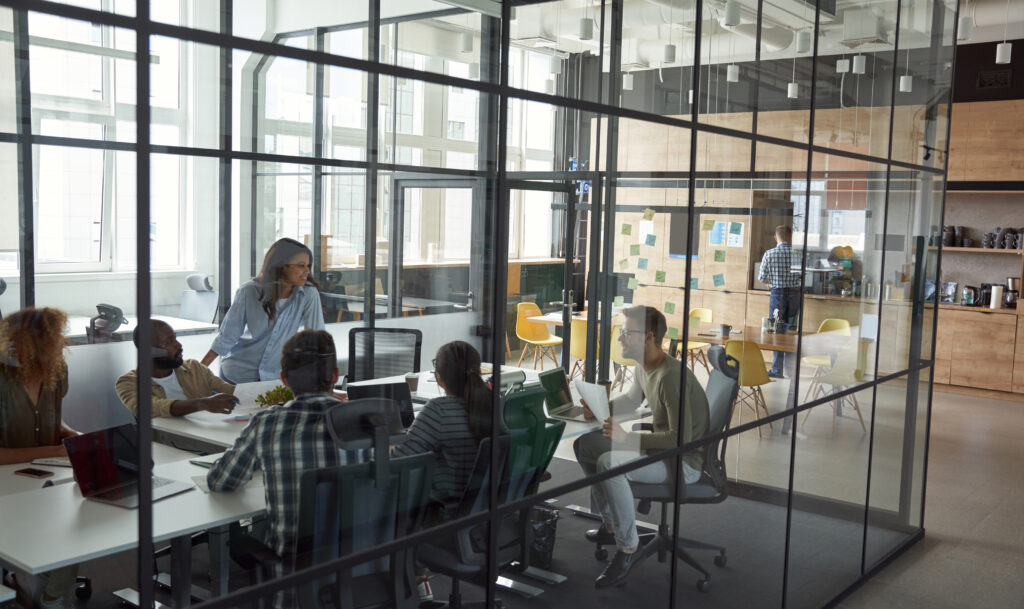For many small and medium enterprises (SMEs) in Australia, the office environment is more than just a physical location. The way that workspace is designed, organised, and managed can have a significant effect on both productivity and employee wellbeing. Thoughtful office design can enhance focus, reduce stress, and create a more engaged and motivated workforce.
Why Office Space Matters
The environment in which employees work influences comfort, collaboration, morale, and mental health. Thoughtfully designed offices that incorporate natural light, ergonomic furniture, and flexible layouts can significantly improve productivity and wellbeing. Research from Healthdirect shows that Australians spend roughly one-third of their time at work, making a safe, healthy, and supportive workspace a crucial factor in maintaining both physical and mental health.
From a business perspective, employees represent one of the largest costs as well as one of the most valuable assets. Enabling staff to remain healthy, engaged, and efficient is not only beneficial for them, but it is also a smart investment in the business’s long-term success. Well-designed workspaces can transform the office from a routine location into an environment that actively supports business growth and innovation.

Productivity Benefits of Well-Designed Office Space
- Comfort and Ergonomics
Poor furniture, insufficient lighting, and inadequate temperature control can cause discomfort, distraction, and fatigue. These factors may lead to decreased focus, longer breaks, or increased absenteeism. By providing ergonomic chairs, adjustable desks, and proper lighting, businesses help employees maintain energy and concentration, reducing interruptions and improving overall productivity. - Layout and Flexibility
Modern work requires both independent focus and collaborative engagement. Flexible office layouts, including quiet zones, breakout areas, and meeting spaces, give employees the freedom to select the environment best suited to their tasks. Larger organisations often adopt enterprise office spaces to balance collaboration and individual productivity effectively. Even SMEs can apply flexible zoning concepts to smaller offices, improving workflow and employee satisfaction. - Design Features: Light, Air Quality, and Acoustics
Access to natural light, fresh air, and quiet environments has been shown to support concentration, mental clarity, and overall wellbeing. Poor lighting, stale air, and noisy surroundings can lead to fatigue, lower performance, and increased errors. By prioritising these design elements, businesses can create spaces where employees feel alert, comfortable, and focused throughout the workday. - Reduced Absenteeism and Turnover
A thoughtfully designed office contributes to lower absenteeism and staff turnover. According to the Victorian Government’s workplace design guidance, improved office environments can reduce turnover from approximately 25 per cent to 11 per cent in certain cases. This demonstrates the measurable impact of office design on workforce stability and highlights the financial and operational advantages of investing in employee-centred spaces.
Impact on Employee Wellbeing
Mental Health and Stress
Supportive office spaces encourage a better work-life balance, reducing stress and promoting engagement. Employees in environments designed for comfort, flexibility, and usability report higher satisfaction levels and lower burnout rates. Stress reduction is not just a personal benefit; it also leads to higher productivity, creativity, and problem-solving ability within teams.
Physical Health
Extended periods of sitting, poor posture, and inadequate ergonomic support can contribute to musculoskeletal issues and long-term health problems. Incorporating sit-stand desks, encouraging movement breaks, and designing open spaces can mitigate these risks, allowing employees to maintain their health while performing their duties effectively.
Flexible Working Options
Hybrid work models, unallocated desks, and flexible seating allow employees to choose how and where they work. Flexibility has been linked to improved productivity, higher engagement, and greater job satisfaction. SMEs that offer adaptable work arrangements are better positioned to retain talent and maintain an engaged workforce.

Practical Tips for SMEs
Engage Employees in Design
Ask staff for input on office layout, furniture, and collaborative spaces. Designing the office with actual user needs in mind ensures higher adoption, satisfaction, and usability.
Audit Essentials
Regularly assess lighting, temperature, air quality, and noise levels. Even small adjustments in these areas can lead to noticeable gains in comfort, health, and productivity.
Support Flexible Work
Offer breakout zones, hybrid working options, and unallocated desks to allow employees to work in ways that suit their tasks and personal work style. Flexibility fosters autonomy and satisfaction.
Encourage Movement
Promote short walking breaks, standing meetings, and stretching routines to enhance physical wellbeing and reduce the negative effects of prolonged sitting.
Measure and Iterate
Collect feedback on engagement, absenteeism, and workflow efficiency to continually refine the office environment. Iterative improvements ensure the workspace evolves with changing business needs and employee expectations.
Common Pitfalls to Avoid
- Treating office design as a one-time project rather than an evolving process.
- Prioritising aesthetics over functionality.
- Ignoring employee input, which can reduce buy-in and satisfaction.
- Neglecting management support and workplace culture when implementing flexible work options, which can increase stress and burnout.
Why This Matters for SMEs
Investing in good office spaces delivers tangible business benefits. Improved productivity, lower turnover, higher engagement, and fewer days lost to illness or injury all positively impact the bottom line. Planning, whether designing office spaces for small teams or adopting enterprise office spaces for larger groups, supports both employee wellbeing and business performance.
By prioritising comfort, flexibility, thoughtful layout, and employee engagement, SMEs can create environments that enhance productivity, reduce stress, and foster a healthy, committed workforce. A well-designed office is an investment in the people who drive the business forward, because when employees thrive, businesses thrive too.







